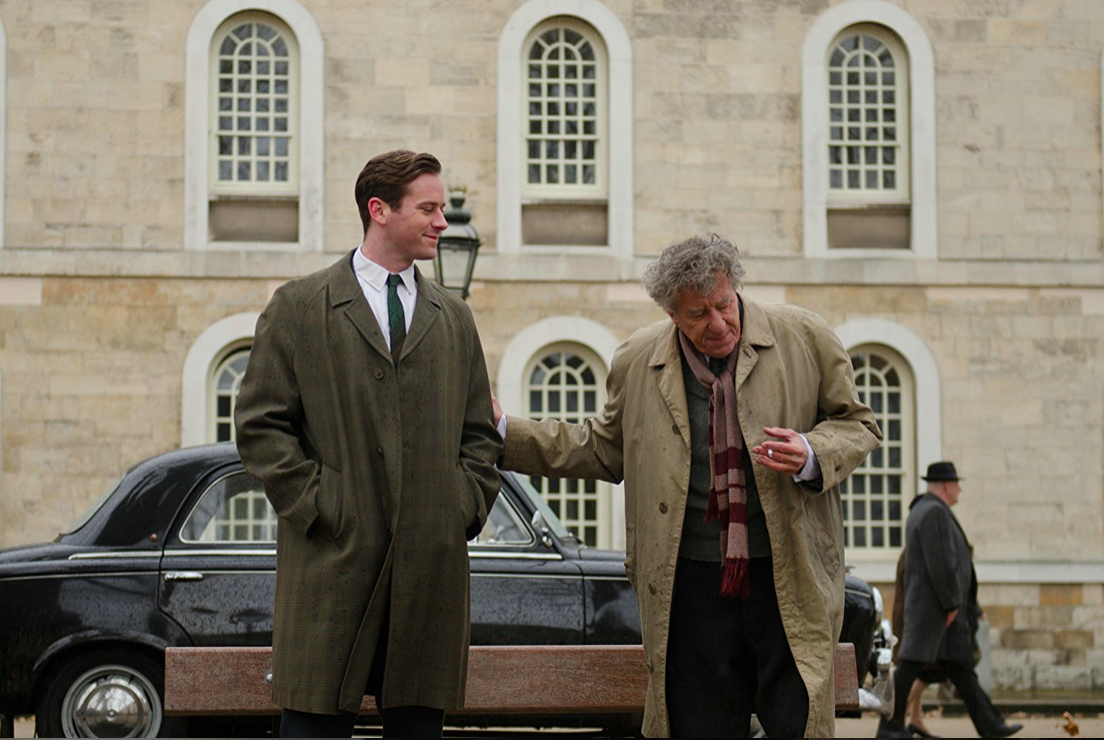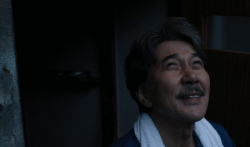Stanley Tucci’s The Final Portrait explores the trope of the tortured artist through its vignette of painter and sculptor, Alberto Giacometti, as he creates one of his last great works. The plot’s repetitiveness prevents the film from fully engaging the viewer, as its seems to stop and start as frequently as Giacometti paints over his own seemingly satisfactory work. Yet Portrait is successful at capturing the excruciating self-doubt that comes with an artist’s success.
The story centers on Giacometti (Geoffrey Rush) as he paints James Lord. Played by Armie Hammer, who has garnered fame from the recent film Call Me By Your Name, Lord is a young American author who would later become the artist’s biographer. Lord has been told his sitting will only last a day. However, because of Giacometti’s dissatisfaction with his work, Lord continues to delay his flight, promising a loved one waiting at home that his return will be delayed just one more day. This cycle is the only drama of the movie and makes for a tiring, unengaging plot line. The shaky camera work and tight close-ups of the two main characters add some tension and unease, but ultimately confine the flow of the acting.
Set in Paris in the 1960s, most of the movie takes place in Giacometti’s messy, dilapidated studio and home, contributing to the film’s claustrophobic feel. The drabness of this setting is amplified by the muted palette of greys, blacks, and whites that is almost too perfectly coordinated with Giacometti’s own color scheme for his portrait of Lord. The few flashes of color are brought in by the two women in the film. Giacometti’s wife, Annette, wears a yellow coat, and his lover and muse, a prostitute named Caroline, favors the color red. The relegation of these women as bright counterparts to Giacometti’s dark masculinity is uncomfortable at times. This discomfort manifests itself in scenes such as when Giacometti tells Lord of fantasizing about raping and killing women to fall asleep at night. While this anger is not explicitly acted upon in the film, except in small spats with Annette, Giacometti’s neglect of her doesn’t do any favors in endearing the audience to the artist.
Portrait delivers a warts-and-all depiction of Giacometti in his last successful years and is best when capturing his quirks. As a result, much of Rush’s performance of Giacometti consists of portraying his eccentricity. While this is mostly conveyed in the artist’s outbursts of frustration —shouting a certain expletive every time he makes a mistake in his painting—the more telling moments are when Giacometti tenderly caresses the many sculptures littering his studio. His obsession with perfecting them is his expression of love and is mirrored in his passion for and possessiveness of Caroline. The larger theme of the ceaseless pursuit of perfection in creating art is reflected better in these tender moments than in the overall torturous and cyclical plot of the film. Although this lifestyle of constant self-doubt may seem unbearable, his apparent love for his art demonstrates why Giacometti prefers to never be finished with his work.
When Giacometti lies in bed ill, being tended to by his wife, he is revealed to be—without his art—just a frail, old man. The film seems to be making the case that artists thrive on dissatisfaction and desperation. Giacometti talks of contemplating suicide everyday. This darkness is part of his method—and is perhaps the impetus for—creating his brooding portraits and sculptures. The movie’s expression of the torturing necessity of making one’s personal creations vulnerable to the criticisms of the greater world is an experience to which many artists can relate. Giacometti’s increasing desperation to complete a great piece of art is poignant when he is shown as an aging man struggling to make his mark on the world. His self-centeredness in achieving his goal of perfection could be a fascinating exploration, unfortunately, Portrait’s slow-moving plot and lack of well-rounded characters make the subject appear too pathetic to counter the “suffering artist” stereotype.





